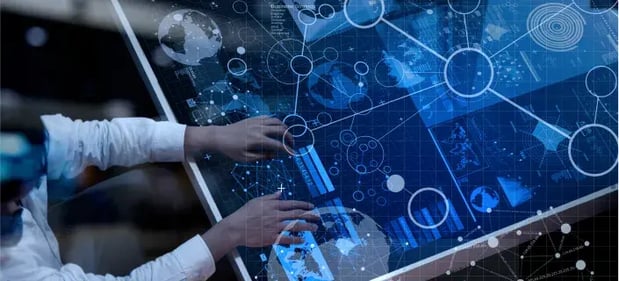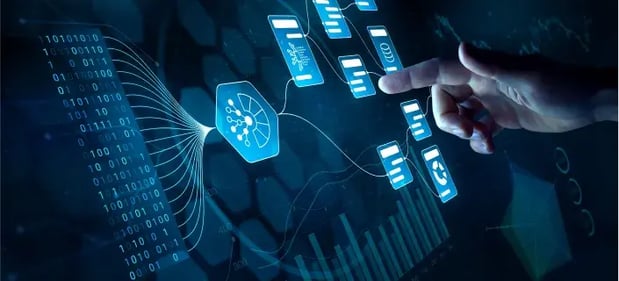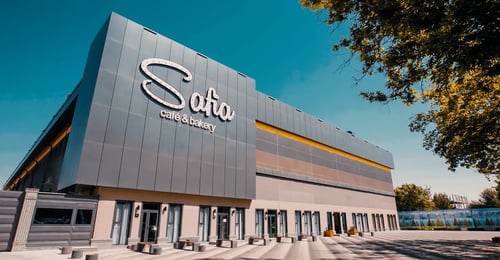
SAP Solutions for the Food and Beverage Industry
Optimize enterprise management in food and beverage production at every stage — from raw material procurement to final sales.



Contact us
Fill out the form below, and we will contact you at short notice.
Automation with SAP Equals Speed, Accuracy, and Control
Managing production, supply chains, and quality control is not a small task. Manual processes slow things down, and even small errors can lead to big losses. You want everything to run smoothly — but how do you find the right technology to make it happen?
SAP is designed to tackle these challenges. It helps food and beverage companies optimize workflows, reduce costs, and accelerate product launches.
At LeverX, we ensure SAP works for your business. We don't just explain how the system functions — we customize it to fit your needs and support you at every stage of implementation.
How SAP Solves Key Challenges in the Food and Beverage Industry
Lack of supply chain visibility
Stricter sustainability requirements
Rising costs
Regulatory headaches
Changing consumer preferences
Slow tech adoption
Outdated data slows down processes
Labor shortages
Market uncertainty & global risks
Frank Lozinski
Account Manager
Tackling Challenges Across Food and Beverage Subindustries with SAP
- Dairy products
Monitor shelf life, balance supply with seasonal demand, and trace ingredients from farm to store. - Bakery and confectionery
Manage recipes, label allergens accurately, and prepare for spikes in holiday-driven demand. - Meat, poultry, and seafood
Ensure cold chain integrity, track origin data, and comply with strict food safety standards. - Beverage manufacturing
Coordinate packaging, manage product variations, and track performance of promotional campaigns. - Alcoholic beverages
Control fermentation, manage excise compliance, and plan distribution for multi-market launches. - Packaged and processed foods
Schedule batches, reduce inventory gaps, and streamline recall procedures when needed.
- Frozen foods
Maintain cold logistics, monitor expiry dates, and meet regulatory standards for frozen products. - Pet food
Align production with regulatory needs, manage formulations, and maintain traceability across supply chains. - Food distribution and wholesale
Streamline logistics, manage warehouse conditions, and fulfill bulk orders efficiently. - Online food retail
Coordinate dynamic pricing, manage real-time inventory, and optimize local delivery routes. - Private label production
Customize branding, manage short lead times, and deliver high-quality private label goods. - Catering and institutional food services
Plan menus, control large-scale inventory, and maintain cost visibility for institutional kitchens.
SAP Solutions for the Food and Beverage Industry
Enterprise resource planning
SAP solutions provide better control over operations, improve flexibility, and enhance product and service quality:
- Automate processes to save time and reduce errors.
- Eliminate routine tasks so you can focus on business growth.
- Analyze real-time data for faster, smarter decision-making.
- Unify all departments into a single ecosystem to cut costs and speed up operations.
Show more
-
Ready-to-run cloud ERP
Manage resources more efficiently with an intelligent cloud-based ERP.
-
Optimize supply chains and accelerate customer interactions.
-
Drive digital transformation and expand your business capabilities.
Supply chain management
With SAP solutions for supply chain management, you can:
- Integrate processes and automate data exchange with suppliers and logistics providers.
- Predict risks and quickly adapt to market changes.
- Track goods movement, anticipate deviations, and respond proactively.
Show more
-
SAP Business Network Supply Chain Collaboration
Collaborate with logistics partners, track shipments, and manage risks.
-
Build resilient and flexible supply chains that adapt to market fluctuations.
-
SAP Business Network Global Track and Trace
Gain full visibility into shipments and respond to changes in real-time with global monitoring.
Revenue management
SAP solutions help you build an effective sales strategy by:
- Managing pricing, assortment, and promotions based on data.
- Reducing costs and increasing profitability without compromising quality.
- Analyzing customer behavior to offer exactly what they need.
Show more
-
Revenue Growth Management Solutions
Conduct comprehensive sales analysis.
-
Enterra Revenue Growth Intelligence System
Use automated optimization for pricing, promotions, assortment, and advertising campaigns.
Intelligent sales
With SAP solutions, you can implement sales and demand management innovations that provide:
- Flexible personalization to adapt to customer behavior using AI and machine learning.
- Greater forecasting accuracy by integrating sales, inventory, and supply chain data.
- Improved customer experience through intelligent recommendations and personalized offers.
Show more
-
Personalize sales and manage products in real-time.
-
Alloy.ai for Digital Supply Chain
Improve demand forecasting and inventory management.
-
SAP CX AI Toolkit
Leverage AI to create a unique customer experience.
AI & ML Use in the Food & Beverage Industry
SAP supports key processes in food and beverage — from production and storage to sales and traceability. AI helps deal with short shelf lives, dynamic demand, and safety rules. It brings speed and foresight to everyday operations.
Where AI adds an extra layer:
- Predicting spoilage based on temperature and logistics data.
- Forecasting demand to improve production and reduce overstock.
- Monitoring hygiene compliance using AI-powered video analysis.
- Optimizing recipes and ingredients based on consumer feedback.
SAP solutions already come with AI tools to support these scenarios. We help implement and adjust them to fit your logistics model — or develop new AI tools if your operations require a more tailored setup.
How We Can Help

Consulting

Implementation

Integration

Support

Application management
Customer Success Stories

Implementation of SAP S/4HANA Private Cloud for Safia
LeverX assisted in the successful digital transformation of one of the largest confectionery chains in Uzbekistan.

Revolutionizing Distributors' Sales Performance With Analytics Platform
LeverX developed a comprehensive Sales Performance Management platform with numerous modules and integrations, including SAP, to streamline distributors' operations and help them optimize their performance.

SAP Customization Project for a Large Food Retailer
The LeverX team improved the customer’s existing SAP systems. The modification and development done by our experts allowed the client to increase profits from product sales and marketing processes efficiency.
Why LeverX?
Proven track record
Industry experts
SAP partnership
Quality and security
Investment in innovation
Flexibility
Implementation Roadmap
- Current processes evaluation: Assess existing business processes and identify the organization's needs.
- Defining technical requirements: Create a detailed specification of the functional and technical needs of the new system.
Discover
- Setting goals and objectives: Establish and agree on the goals to be achieved throughout the project.
- Assembling the project team: Appoint team members and define their roles and responsibilities.
- Project plan development: Create a comprehensive plan that outlines project phases, timelines, resources, and key performance indicators.
- Budget determination: Estimate and approve the budget.
- Specifications preparation: Develop the technical and functional specifications for the development team.
Prepare
- Ensuring business requirements are met: Check that the solution aligns with business requirements and project objectives.
- Data validation: Verify the accuracy and compliance of the data.
Explore
- Data migration: Transfer data from existing systems to the new one.
- System configuration: Set up the solution according to requirements and specifications.
- Customization: Develop additional features and modules, if the standard solution does not meet all needs.
- Integrations: Configure the solution to work with other IT systems and applications.
Realize
- Testing: Perform functional, integration, regression, and load testing to ensure that all works correctly.
- User training: Organize sessions to help users become familiar with the new system.
Deploy
- System readiness check: Verify that the system is ready for operational use.
- Launch: Officially transition to active use of the solution.
- Ongoing support: Continuously monitor solution performance to identify and resolve any issues.
Run
FAQ
How does SAP support food and beverage companies in meeting sustainability and regulatory demands?
What makes SAP S/4HANA migration critical for food and beverage companies that rely on legacy ERP systems?
Can SMEs in the food and beverage industry adopt SAP without a high upfront investment or technical expertise?
How does SAP integration with AI and IoT improve operational efficiency in the food and beverage industry?
What role does SAP Fiori play in enhancing workforce productivity in fast-paced sectors like food production?
Contact Us
What happens next?
-
1
An expert will reach out to you to discuss your specific needs and requirements.
-
2
We'll sign an NDA to ensure any sensitive information is kept secure and confidential.
-
3
We'll work with you to prepare a customized proposal based on the project's scope, timeline, and budget.
years of expertise
projects
professionals
Contact Us